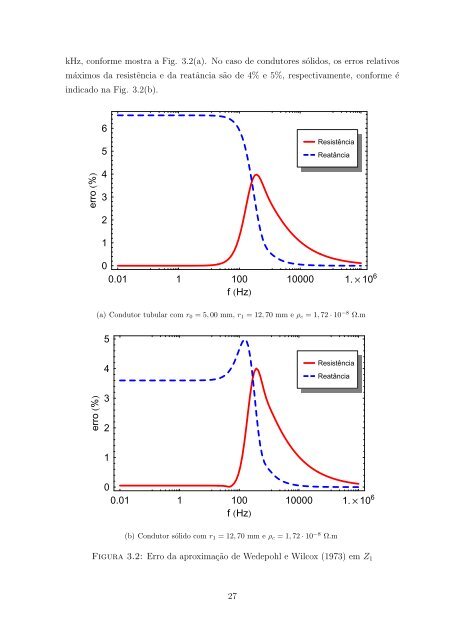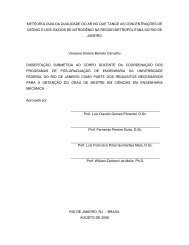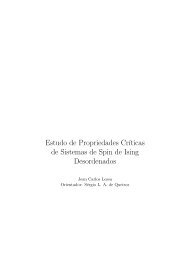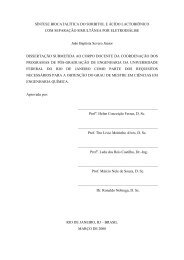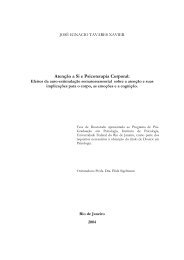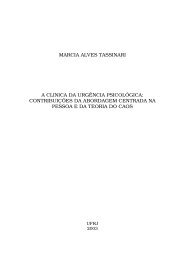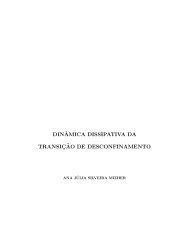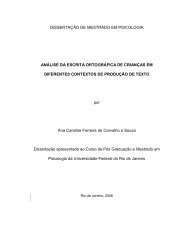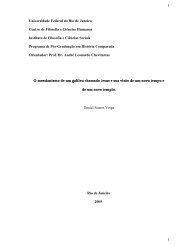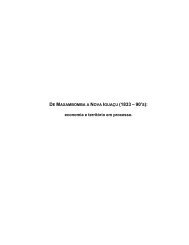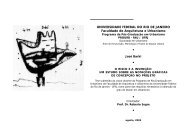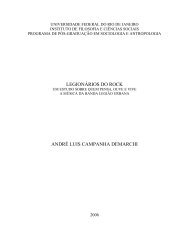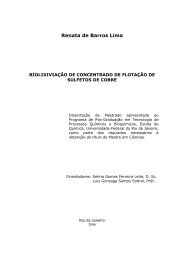MODELAGEM DE CABOS SUBTERRˆANEOS E ... - UFRJ
MODELAGEM DE CABOS SUBTERRˆANEOS E ... - UFRJ
MODELAGEM DE CABOS SUBTERRˆANEOS E ... - UFRJ
You also want an ePaper? Increase the reach of your titles
YUMPU automatically turns print PDFs into web optimized ePapers that Google loves.
kHz, conforme mostra a Fig. 3.2(a). No caso de condutores sólidos, os erros relativos<br />
máximos da resistência e da reatância são de 4% e 5%, respectivamente, conforme é<br />
indicado na Fig. 3.2(b).<br />
erro%<br />
erro%<br />
6<br />
5<br />
4<br />
3<br />
2<br />
1<br />
0.01 1 100 10000 1.10 6<br />
0<br />
fHz<br />
Resistência<br />
Reatância<br />
(a) Condutor tubular com r0 = 5, 00 mm, r1 = 12, 70 mm e ρc = 1, 72 · 10 −8 Ω.m<br />
5<br />
4<br />
3<br />
2<br />
1<br />
0.01 1 100 10000 1.10 6<br />
0<br />
fHz<br />
Resistência<br />
Reatância<br />
(b) Condutor sólido com r1 = 12, 70 mm e ρc = 1, 72 · 10 −8 Ω.m<br />
Figura 3.2: Erro da aproximação de Wedepohl e Wilcox (1973) em Z1<br />
27


